iPhone 11 Pro Night Mode: Surviving a haunted theme park against the Galaxy S10 and Pixel 3
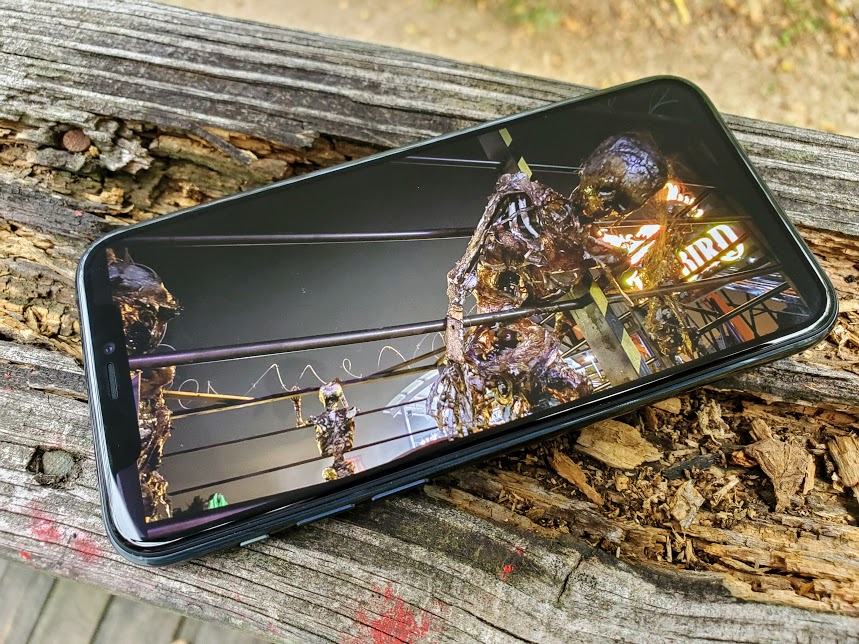
I'm a sucker for a spooky house. Something about the fog machines, the screaming, and the fake blood makes me happy. While that's something I should probably tell a therapist I instead used it as an opportunity to test out the new iPhone 11 Pro camera. If you've seen Rene Ritchie's amazing comparison with the Pixel, Note 10, and P30 Pro, you already know this camera can more than hold its own when the sun goes down. If you've seen Lory Gil's trip to a rock show with the iPhone 11 Pro, you know this camera has its limits but is still damned impressive.
Today, however, I'm taking you to Six Flags America at 9 p.m. during Fright Fest — darkened rooms, creepy lights, and loads of people running around screaming. There aren't a lot of opportunities for great photos in this environment unless you have a really great camera and some patience, but I managed to take some amazing shots and learned a ton about how to get the most out of the iPhone 11's night mode.
Tap to focus still makes a huge difference
While the iPhone 11 camera features 100% focus pixels and the autofocus on this camera is second to none during the day, at night you'll find you get a lot more out of this camera if you pick the right spot to pull light from. Here's a shot of the Wonder Woman ride, with — from left — the iPhone 11, Samsung Galaxy S10, and Pixel 3 in all of these photos. To see the whole photo, just click or tap.



Looks like the Pixel crushed the other two, right? That's because the iPhone 11 Pro focused on the brightest spot in the scene (which was really bright) and made sure it was sharp and in focus. This is great, but not what I really wanted from the shot. So I tapped on the red bars below the bright spikes and this happened:
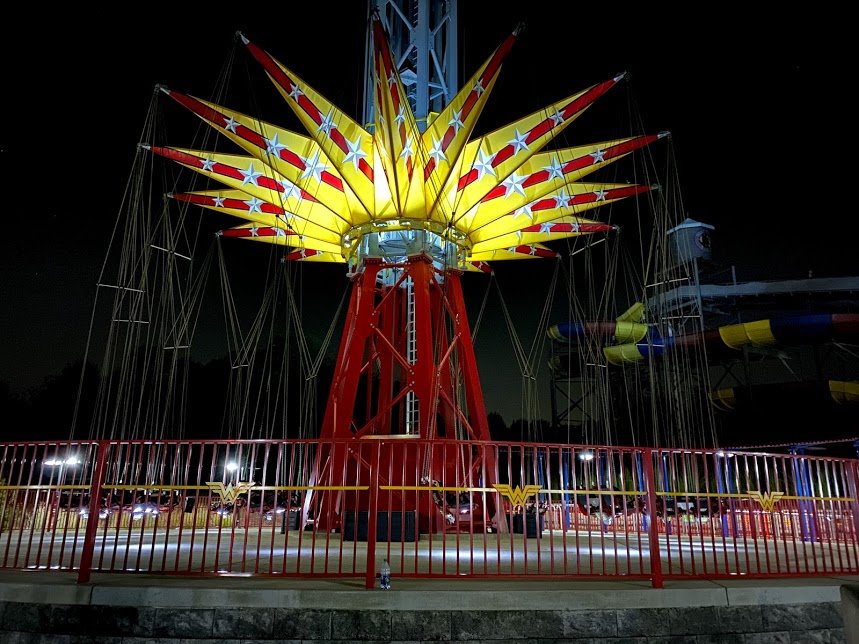
This shot is WAY better. It's still not exactly as bright as the Pixel 3, especially in the background, but the differences between the two shots are barely noticeable now.
Color balance is better than light sometimes
There's this amazingly spooky zombie cowboy sitting in between some lights with a fog machine rolling over it, which you could easily miss unless you're standing right in front of it. I sat in front of this thing for nearly 20 minutes trying to get the right photos because the fog was a variable and when people scream they tended to run right in my camera path. But finally, after all that time, I got the photos I wanted.



More light is not really better in these shots. The iPhone 11 did a much better job capturing the scene, and that has everything to do with its auto-mode being capable of making the right decision in this situation. The Pixel 3 fills the scene with light, which is technically correct but ends up eliminating a lot of drama from the shot in the process, and because Google's image processing happens after you take the shot instead of in real-time, there was no way to really tell how this was going to look until after. This isn't really a problem with the iPhone.
Master your iPhone in minutes
iMore offers spot-on advice and guidance from our team of experts, with decades of Apple device experience to lean on. Learn more with iMore!
Background light is important too
My good friend Corpsey Shuffle here was hanging out with some of his bros and I couldn't help but grab a shot. Behind this mangled body is a terribly bright sign for the Firebird roller coaster, which makes getting the shot right more than a little difficult.

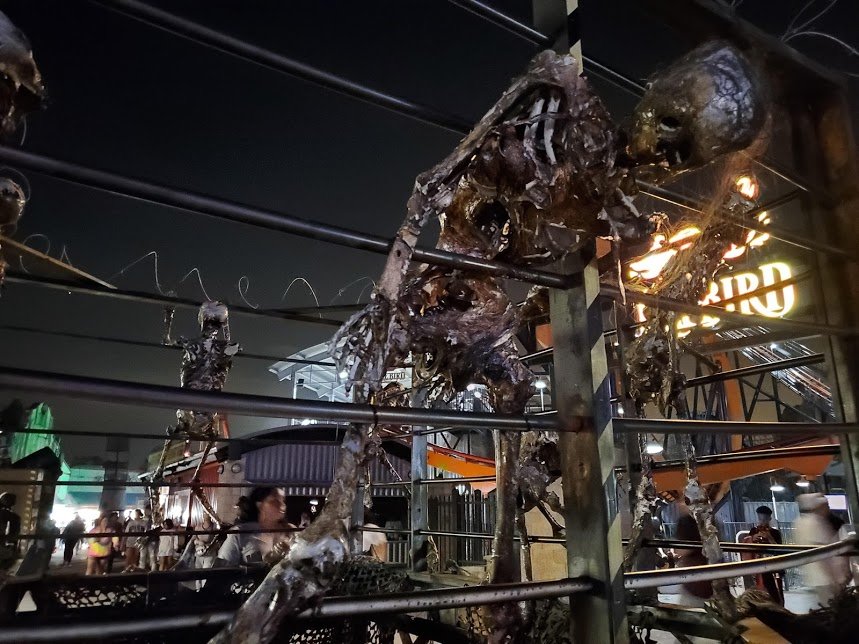
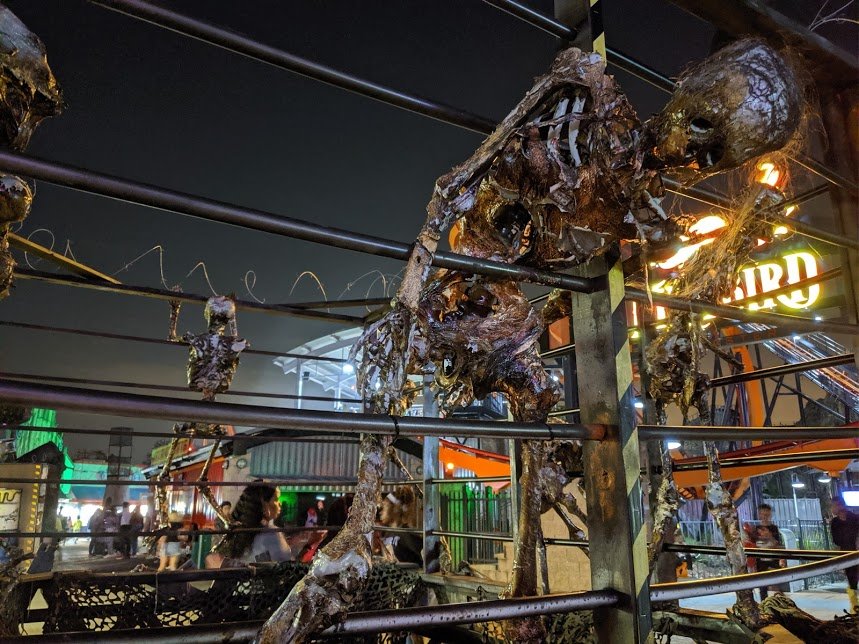
Samsung missed this shot entirely; I'm actually embarrassed for the phone compared to the other two. Google's Pixel 3 brought so much light and sharpness to the photo, but in the process made the lights in the background also pop and not look quite as good. Apple's camera made a different choice, choosing to properly expose the light in the background at the cost of the foreground being not quite as well lit. In my opinion, it's the better shot because of that.
We need to talk about selfies
Night mode on the iPhone 11 is really good. I was originally skeptical this software just "caught up" to the Pixel 3 from last year, but that's not true at all. Apple has built a solid foundation for a great low light platform, and we're going to see it quickly improve with the addition of Deep Fusion later this year.
Having said all of that, not being able to access this amazing feature with the front camera is so unfortunate.



I get the technical hurdles here. Google is able to use the same computational photography techniques it uses on the rear camera because the camera isn't really the most important part of that. Apple's night mode doesn't work that way, and this front-facing camera is essentially the same as every other FaceID array.
Still, I want some epic night mode selfies on the iPhone. Maybe it'll get better with Deep Fusion?
Here, have some more photos
I'm not ready to call Apple or Google undisputed champions of darkness based on these or any of the other photos I've seen so far. They're about equal, which is both incredible and surprising when you understand how different the two approaches are. The only thing I can say definitively is they're both consistently better than Samsung at night, and that's unlikely to change anytime soon.
Until next time, enjoy some of the other compares I shot but didn't use either because of rotating colors I couldn't control or because they illustrated points I had already made.








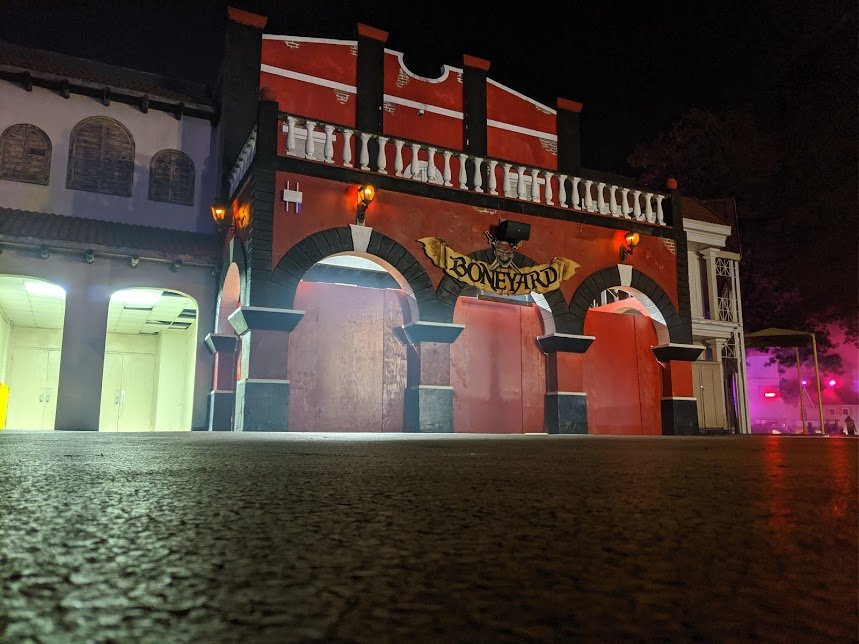


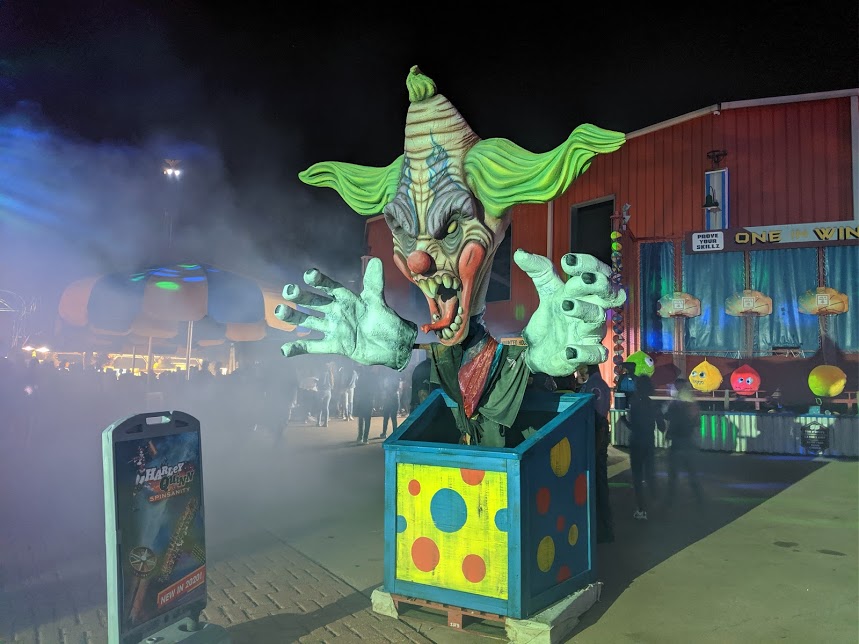
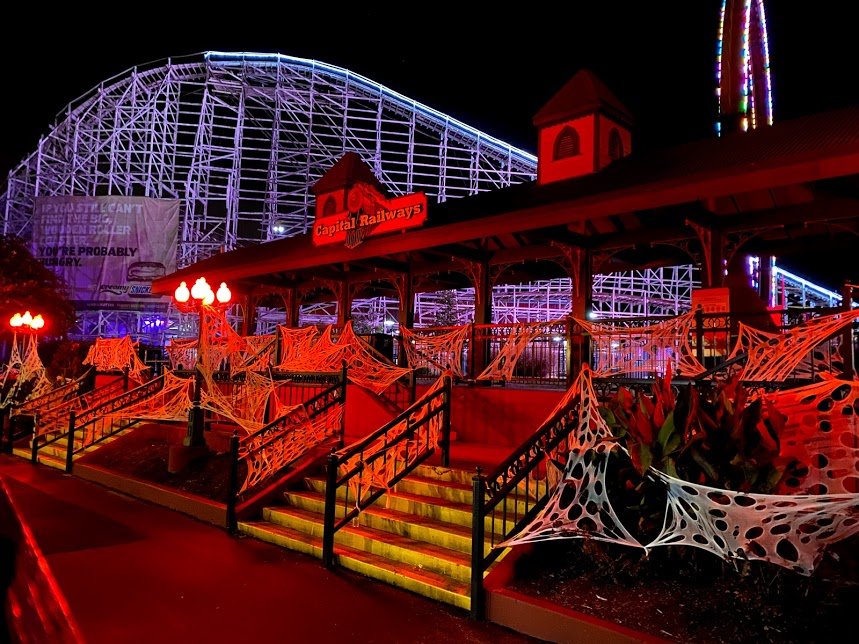





Russell is a Contributing Editor at iMore. He's a passionate futurist whose trusty iPad mini is never far from reach. You can usually find him chasing the next tech trend, much to the pain of his wallet. Reach out on Twitter!

